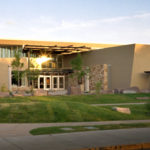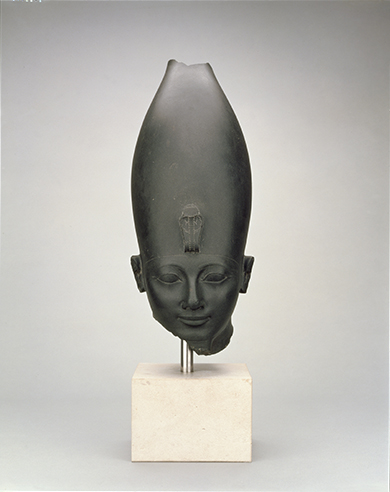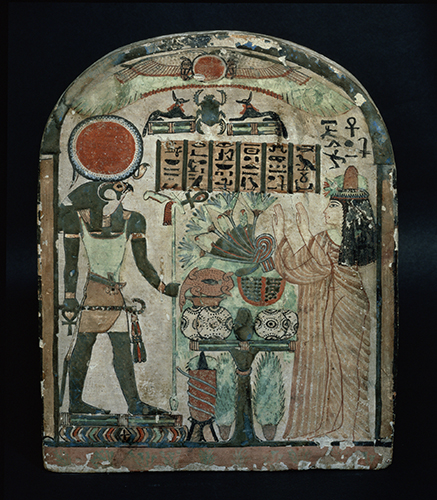Temples and Tombs presents a rare opportunity to see both renowned masterpieces and little-known treasures that reflect the richness and scope of one of the foremost collections of Egyptian antiquities in the world.
Temples and Tombs presents a rare opportunity to see both renowned masterpieces and little-known treasures that reflect the richness and scope of one of the foremost collections of Egyptian antiquities in the world. Approximately eighty-five magnificent objects span the full range of pharaonic history— from shortly before the Third Dynasty, about 2686 B.C., to the Roman occupation of the fourth century A.D.—covering the four periods into which ancient Egyptian history is divided: Old Kingdom, Middle Kingdom, New Kingdom, and the Late Period.
Sculpture, relief, papyri, ostraca, jewelry, cosmetic objects, and funerary items in a variety of media—including stone, wood, terra cotta, gold, glass, and papyrus—are organized into four sections: the king and the temple; objects from the lives of artists and nobles; statues of Egyptians from temples and tombs; and the tomb, death, and the afterlife. The king, the highest ranking mortal, also embodied elements of the gods, and the temple is the central physical expression of this relationship between the two. Immediately recognizable by his garments, crown, and the oval cartouche in which his name was usually inscribed, an Egyptian king was the individual best able to please the gods. The objects used by artists and nobles reflect activities such as fishing, hunting, grain harvesting, boat building, dancing, and banquet scenes from celebrations. The earliest statues of private individuals were found in tombs as a place where the spirit of the deceased could reside. Private statues were also found in temples representing an individual’s status, wealth, and ability to partake in the cult offerings. Seeking to extend life after death, the Egyptians made provisions in their burials for the Afterlife, although only the affluent could afford the full array of tomb items and rituals intended to protect the body of the deceased and insure a successful Afterlife for the soul.
ITINERARY





Curator
Edna R. Russmann is Curator of Egyptian, Classical, and Ancient Middle Eastern Art at the Brooklyn Museum of Art.
Credit
This exhibition is organized by the American Federation of Arts and The British Museum, and is made possible, in part, by the Philip and Janice Levin Foundation Fund for Collection-Based Exhibitions at the American Federation of Arts.

